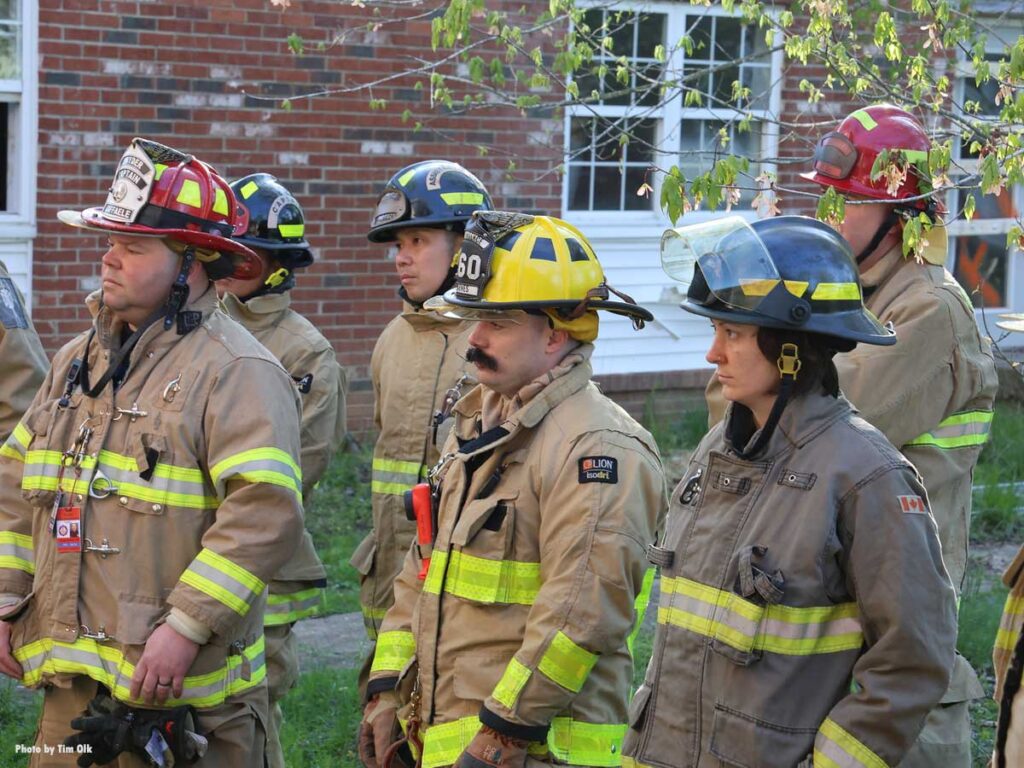
Robert Kennedy famously said, “Some men see things as they are and say why. I dream of things that were never and say why not.” I recently was having a conversation about fire service cancer with a well-known and respected industry leader and visionary in the fire service who has served for close to five decades. We were doing dive on how to tackle and eradicate cancer in the fire service, and whether the latter is even possible. According to the International Associational of Fire Fighters (IAFF), 60% of the members honored each year on their memorial wall in Colorado Springs were felled by occupational cancer. This is much in lune with the current essay contest that our friends at W.S. Darley are hosting, which focuses on how to change fire service culture.
This conversation gave me great pause, as we have much research being done on the subject. My friend and colleague stated that prevention is the key to addressing cancer in the fire service. I can’t say I disagree, but fire has been with humans as long as we have walked this planet, originating with lighting strikes. I have spoken previously about applying the principles of community risk reduction to fire service personnel; the idea of “human risk reduction” means effectively mitigating risks to our health where they are modifiable. In essence, control what we can control. Unfortunately, humans will be humans, and this doesn’t always happen. According to data from the U.S. Centers for Disease Control and Prevention (CDC), about one in five adults between the ages of 50-75 have never been screened for colorectal cancer—that’s 20%. Other CDC reports have placed that number as high as 33%. My dear friend and colleague was suggesting that perhaps a more direct frontal approach was needed with the fire service and firefighters’ family members. The idea would be to effect a wrenching change in behavior, knowing that otherwise we might continue with the status quo. That requires some serious pondering, and the argument is not necessarily without merit.
PFAS in Firefighting Foam and PPE
The IAFF, Dr. Graham Peaslee of Notre Dame, and Worcester (MA) firefighter and cancer survivor Paul Cotter and his wife Diane have pulled back the curtain on the issue of personal protective equipment (PPE) contamination with carcinogenic chemics. This has driven the industry in a race to ban AFF foam and develop PFAS-free gear. Their story is told in the Ethereal film “Burned.”
Time Is Your Enemy
Prevention has also been on the forefront, with decontamination, gear cleaning, wipes, the clean cab concept, and similar responses. However, we would be remiss to ask why rather than why not? Are we really changing the fire service culture? Ask yourself that honestly. We know that dermal absorption happens rapidly when it comes to skin contact by carcinogenic byproducts of combustion, in the case of respiratory absorption. For cancer risk mitigation, firefighter decontamination is a time-dependent emergency. Are we treating it that way? I say we are not.
Early Detection Strategies
Earlier in this piece, I touched on the fact that many of us put off checking on our own health. A friend and colleague, Dr. Mike Hamrock—a former Boston firefighter, practicing physician, and co-author our Fire Engineering book, Surviving the Fire Service—says, “get the spouses involved.” We have to motivate fire service leadership, labor leadership, spouses, and ultimately each other to get an enhanced, occupationally specific, fire service physical annually. That’s what I do each and every day in my role now at Life Scan Wellness Centers, the nation’s largest provider of medical surveillance of first responders. If we want to change the status quo, we have to start asking: “Why not?”
Todd J. LeDuc retired after 30 years as executive assistant fire chief of Broward County, Florida. He now serves as the deputy CEO of Life Scan Wellness Centers, the nation’s largest provider of first responder enhanced early detection physicals for over 25 years. He is a peer reviewer for the Center for Public Safety Excellence and a board member of the IAFC Safety, Health & Survival Section, as well as chair of the First Responder Center of Excellence advisory board on medical physicals. He is also the editor of Fire Engineering’s book Surviving the Fire Service.

